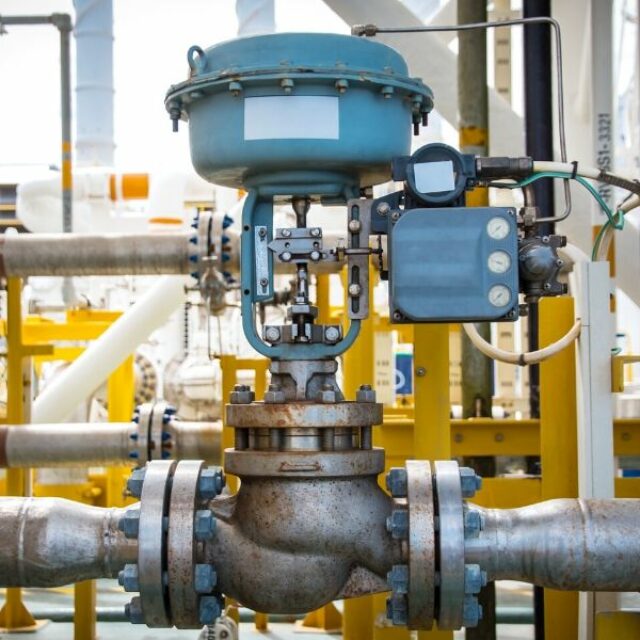Picking the Right Control Valves: An Overview to Optimum System Efficiency
Picking the Right Control Valves: An Overview to Optimum System Efficiency
Blog Article

Maximize Power Financial Savings and Convenience With Advanced Structure Automation Controls
In the realm of contemporary design and center monitoring, the combination of innovative building automation manages stands as a crucial improvement. By using the power of automation, buildings can adjust, respond, and advance in ways that were as soon as unbelievable.
Energy Effectiveness Perks
Power effectiveness benefits can dramatically decrease power intake and operational costs in buildings. By implementing energy-efficient practices and technologies, building owners and drivers can accomplish considerable savings while likewise adding to environmental sustainability. One of the key advantages of enhancing energy performance in structures is the decrease of energy bills. Energy-efficient systems, such as innovative building automation controls, can enhance making use of sources like illumination, cooling, and home heating, bring about lower energy expenditures with time.
In addition, boosted power effectiveness can extend the life expectancy of structure tools and systems. By running extra effectively, HVAC systems, lighting fixture, and other building components experience less deterioration, leading to reduced maintenance and replacement costs. Additionally, energy-efficient buildings typically regulate higher property worths and rental prices, supplying long-lasting monetary advantages to owners.
Furthermore, energy performance can enhance owner comfort and productivity. Appropriately controlled indoor settings with optimal lights and thermal conditions produce a more favorable and pleasant work area, bring about improved worker satisfaction and performance. Generally, the energy effectiveness benefits connected with advanced structure automation controls are complex, including expense savings, environmental stewardship, and occupant health.
Enhanced Convenience Control
Enhancing comfort control in building environments calls for an innovative combination of sophisticated automation systems for ideal passenger wellness. By using advanced building automation controls, facilities can tailor the indoor setting to satisfy the certain needs and choices of owners. control valves.
By incorporating these sophisticated controls, structures can not only improve convenience yet also improve power effectiveness by maximizing system procedures based on actual tenancy and usage patterns. Inevitably, focusing on owner comfort with advanced automation systems leads to a more enjoyable and healthier interior setting.
Functional Effectiveness Improvements

Additionally, the implementation of real-time surveillance and analytics tools makes it possible for structure operators to recognize energy ineffectiveness and operational anomalies immediately. By continually monitoring energy usage patterns and system efficiency metrics, changes can be made in real-time to enhance power intake and ensure peak operational effectiveness. control valves. Furthermore, including need response techniques right into structure automation controls can better enhance operational effectiveness by dynamically changing power use based upon grid conditions and pricing signals
Indoor Climate Optimization
Reliable indoor environment optimization is a fundamental facet of structure automation Read Full Report controls, making sure owners' comfort and health while taking full advantage of power savings. By using advanced sensing units and controls, building automation systems can constantly check and readjust temperature level, humidity levels, air high quality, and ventilation to create an optimal indoor atmosphere. Preserving comfortable and consistent problems not only boosts passenger satisfaction yet additionally enhances performance and general well-being.
Indoor environment optimization additionally plays an important duty in power performance. By fine-tuning home heating, air conditioning, and air flow systems based on real-time data and occupancy patterns, constructing automation controls can significantly reduce power usage - control valves. Applying methods such as demand-controlled ventilation and thermal zoning can assist minimize power waste while ensuring that each location of the building gets the essential conditioning.

Lasting Setting Development
Building automation controls not only optimize interior climate problems for power effectiveness and resident comfort but also lay the structure for developing a lasting setting via strategic management of resources and systems. By incorporating sophisticated structure automation technologies, such as sensors, actuators, and intelligent software, facilities can adjust and check power usage in real-time to reduce waste and reduce their look these up carbon footprint. These systems enable predictive maintenance, identifying potential issues prior to they rise and optimizing tools efficiency to boost long life and effectiveness.
Additionally, sustainable setting development expands beyond power administration to encompass water preservation, waste reduction, and indoor air top quality enhancement. Structure automation controls can regulate water use, discover leakages, and guarantee correct waste disposal techniques, adding to total sustainability efforts. In addition, by checking and managing air flow and filtration systems, these modern technologies enhance passenger health and efficiency while lowering energy intake connected with cooling and heating operations.
Verdict
To conclude, advanced building automation manages deal substantial benefits in terms of energy cost savings, convenience control, functional performance, indoor climate optimization, and producing a lasting setting. By implementing these controls, buildings can accomplish optimum performance while decreasing power intake and improving resident convenience. It appears that making use of innovative automation innovation is important in boosting building efficiency and creating a much more sustainable future.
Energy efficiency advantages can dramatically minimize power consumption and operational costs in structures. On the whole, the power efficiency benefits associated with sophisticated building automation controls are diverse, including expense financial savings, ecological stewardship, and pop over here owner health.
Additionally, integrating demand reaction techniques into building automation controls can even more boost functional efficiency by dynamically readjusting power use based on grid problems and prices signals.
Structure automation controls not only maximize interior climate conditions for power efficiency and owner comfort yet likewise lay the foundation for producing a sustainable setting through strategic administration of resources and systems.In final thought, progressed structure automation controls deal considerable benefits in terms of energy savings, convenience control, operational effectiveness, indoor climate optimization, and developing a sustainable setting.
Report this page